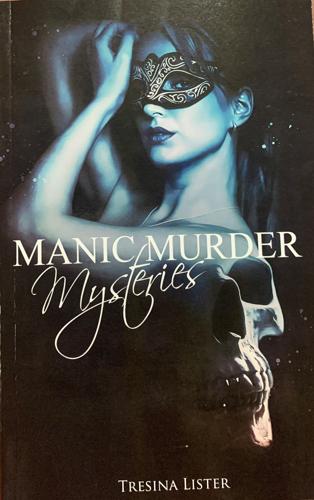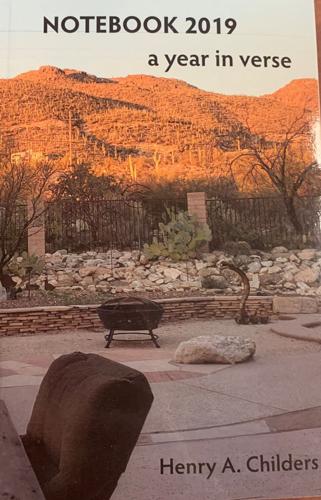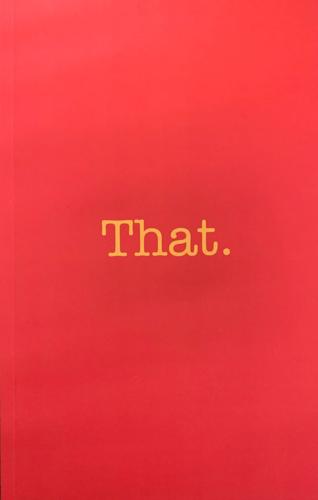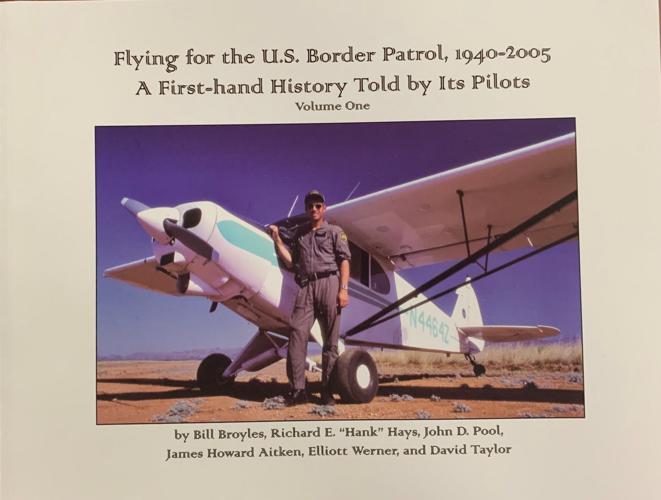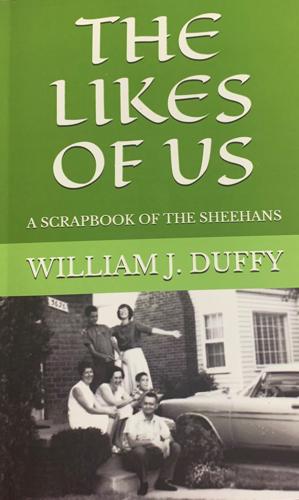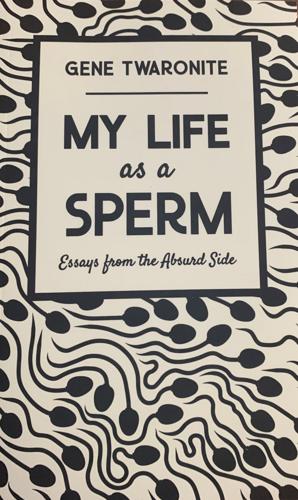“Manic Murder Mysteries”
By Tresina Lister (Tresina K. Lister). $14.95 paperback.
Enticing “dark brown eyes” abound in these stories by Tucson realtor Tresina Lister. So do “rock- hard bodies,” sexy, long hair and kisses “like she’d never (had) before.” But bad things can happen in intense romantic relationships — betrayal, abuse, trafficking — and sometimes people resort to murder to avenge them, as we see in these 26 mini tales. Unfortunately, so much attraction, romance, deception and murder takes place in a short space (the stories run about 1½ to 3 pages long), that one’s at a loss to find any plot motivation or narrative tension in them.
— Christine Wald-Hopkins
“Notebook 2019: A Year in Verse”
By Henry A. Childers (VGB Music). Available at coeweaves.com/notebook-2019. $10 PDF; $25 signed paperback.
Folks who embark on any “year of” creative projects face two daunting challenges: First, to maintain the discipline to carry it through for the entire year; second, to keep the material fresh throughout. Tucsonan Henry A. Childers overcomes both in his rich “Notebook 2019: A Year in Verse.” Childers writes that he dabbled in poetry in the 1960s and ’70s, but turned to songwriting and performing for 25 years (an internet search suggests he had a couple of successful day jobs, as well). Newly retired, he’s returned to poetry. It turns out that he’s a master of the non-clichéd image, and the original observation every day.
His practice was simple: for each day of 2019, fill one page of a notebook. That limited the poems to 23 lines or fewer. With the exception of a few out-of-town trips, he wrote from the patio of his east-side, desert home, in view of the Mount Lemmon Highway. The poems often begin with descriptions of the surroundings — the breaking day, light quality on the mountains; temperature, shifting clouds, birds, a bobcat. Then they shift into another thought or observation. Wispy clouds become “a woman with pianist’s hands;’ become ‘the idea of love/ …the love of idea….’ On a cloudy, windless day, the view becomes a still life that sparks the classic debate between intellect and emotion: “…the head darts out, bird-like/…but the heart hesitates.”
You get accustomed to the objects within his view (cactus, bird feeder, telephone wires, wind sculptures; the pool that gets buried), and they become setting for Childers’ wide-ranging musings. About the fence encircling the yard, for example; “can the desert survive/ with these blots of civilization?/ can civilization survive/ with the desert lapping at the shoreline?” I say read the collection chronologically: It’s seasonal; you can feel the miraculous turning, blooming, desiccating and retrenching of the year in the desert. And come away the better for it.
— Christine Wald-Hopkins
“That.”
By Kristen Cook (Kristen Cook). $9.99 paperback; $3.99 eBook.
She moms! She writes! She squirrels away shoes like Imelda did! What humorist Kristen Cook didn’t get to in her 2019 book “This.” she gets to in her 2020 book “That.” Former journalist Cook, whose “Minivan Momologues” column entertained readers of this newspaper for years, brings that column’s voice, energy and quirky topics to this slim collection of essays. Interested in a little fecal factoid? “Wombats poop cubes.” Culinary suggestion? Pass on the Philippine balut (“fertilized duck egg boiled and eaten with a partially developed embryo tucked inside”). Eighth grade graduation advice? “Have a slice of pie for breakfast. But not a la mode because that’s just excessive.”
“That.” is fun. It’s funny. Cook talks right at ya’ in short, breezy (her word) sentences. She uses her children (Nos. 1, 2 and 3), dogs (also 1, 2 and 3), and husband (Joe) to comment on life. A born chatterer (to the new girl in first grade: “the pencil sharpener is over there, by the chalkboard but you have to be careful because Mrs. Dunlop likes you to sharpen your pencil only at certain times and the best thing for you to do is to have some extras and then you can pull one of those out and use it until you can use the sharpener, so do you have a favorite pencil? I do and I feel like it’s my lucky pencil and …” You get the idea.), she’s clearly a natural entertainer.
Cook says she wrote “That.” “to give some laughs at a time we need them most,” and it works. All proceeds from the book’s sales will go to the Community Foundation for Southern Arizona COVID-19 relief efforts.
— Christine Wald-Hopkins
“Flying for the U.S. Border Patrol, 1940 -2005: A First-hand History Told by its Pilots. Volumes One and Two”
By Bill Broyles, Richard E. “Hank” Hays, John D. Pool, James Howard Aitken, Elliott Werner, and David Taylor. Border Wings Press, Tucson, Limited Edition. Available from the National Border Patrol Museum, $70.
Sixteen years after its founding in 1924, the Border Patrol (BP) officially took to the skies. It was a dangerous job; BP pilots flew in often nail-biting conditions, primarily in the Southwest, to apprehend smugglers and criminals and to search for and assist travelers stranded in the unforgiving deserts. It was an elite corps among police air forces, and its pilots were the best of the best.
The proud, 65-year history of the 283 pilots who flew for the Border Patrol’s air division, from its earliest days until it was folded into the Customs Border Protection Air and Marine in 2005, is recounted in this marvelously comprehensive two-volume set, replete with records, photographs and the personal recollections of the authors, pilots who flew for the BP and experienced the life first-hand.
Descriptions of the BP’s evolving aircraft are central to these books, serving as a framework for the pilots’ personal recollections of missions, events, and well-loved colleagues. Volume I opens with a nascent Border Patrol, whose earth-bound agents on horseback and motorcycles first cast their eyes skyward. By 1940 the force’s fleet consisted of three military surplus Kellett autogiros, aircraft that were ungainly and difficult to fly, and whose appearance had a remarkable effect on animals who were observed to stampede and occasionally somersault in terror.
As the force developed from this inauspicious beginning, so did organizational and equipment requirements. Volume II, in which helicopters join the fleet of small fixed-wing Saber Cats, Cessnas, and Huskies, covers administration of the BP pilots, the expansive geographic sectors, and essential maintenance and safety. The many photographs with which it concludes lend it the quality of an in-group yearbook.
Among the most engaging elements of the book are the plentiful, candid, first-person essays and interviews. As is frequently and proudly declared, “We pilots are a funny breed”—individual, independent, sometimes stubborn. More than one account has a pilot transfer from one site to another because of conflicts with a supervisor, only to return when the boss has been changed. Although all pilots needed to meet common standards, their backgrounds were highly varied—from rancher to bricklayer to military. What they share is a love of flying. The book includes personal accounts of BP flying in all of the US’s 21 BP sectors — from the southern — San Diego to Miami — through the north — Blaine (Wash.) to Houlton (Maine). One pilot describes loving going from flying ski-shod helicopters in Maine winters to chasing smugglers in scorching Tucson sector summers. Repeatedly though, you see this regret: that the Border Patrol air division was eliminated in 2005; and this refrain: to fly for Border Patrol, you must have first been Border Patrol: you can’t track from the air if you haven’t tracked from the ground.
Flight aficionados will find much to savor here, but you don’t have to be an airplane buff to be fascinated, and even moved, by the richly-detailed anecdotes, stories from the cockpit, accounts of intriguing passengers, and reminiscences about the heroes with wings whose adventures come alive in the pages of these two volumes.
— Christine Wald-Hopkins and Helene Woodhams
“The Likes of Us: A Scrapbook of the Sheehans”
By William J. Duffy. Published by the author. $14.45; $1.99 Kindle
An old scrapbook is mute witness to the ties that bind, and sometimes suffocate in this novel about an Irish-American family, set against the backdrop of the socially tumultuous 20th century. In 2019, having reached middle age, Anne Genovese finds herself increasingly curious about her forbears, the Sheehans. Far from being a tightly-knit clan, the Sheehans are surprisingly detached from one another and disinclined to pass down family lore. Anne has only albums of unidentified pictures from which to cobble together her family’s history.
But for author William J. Duffy every picture tells a story, and in his diverting novel he deftly employs a gallery of old photos as a framework to support vignettes that tell the tale of the Sheehan clan across five generations of family dynamics. A grainy, circa 1870 snapshot, predicates the account of orphaned siblings Jack and Annie Sheehan, leaving Ireland for “Americay” and a better life. As time moves on the photos illustrate changing fashions and growing families while periodic interludes of headlines, advertising jingles and song lyrics reflect changing cultural norms. In their pursuit of the American dream, the Sheehans experience their fair share of familial angst, but the importance of knowing who your people are is a theme to which the author consistently returns—family ties may wear thin, but they’re hard to break. Duffy, who worked for the US government for 33 years, lives in Tucson.
— Helene Woodhams
“My Life as a Sperm: Essays from the Absurd Side”
By Gene Twaronite. Absurd Life Press. $12; $3.99 Kindle
“Beware of anyone who cannot laugh,” advises Gene Twaronite, and it’s sound advice. But readers will have no reason to distance themselves from the author of this collection of essays, for which Twaronite drew largely on his own life experiences, occasionally blended with flights of imagination. In these sketches he strives to find the funny side, and when there’s not a smile to be mined in a given event, he says, well, he just left it out. The result is a savory ragout of childhood reminiscences, coming of age adventures and mishaps, career moves, and adventures in love and friendship, liberally mixed with musings about philosophy, religion, diversity, living the simple life, and his path from the east coast to Arizona.
The title comes from chapter one, his (admittedly fictional) account of himself as a resolute sperm keen for life’s adventures, and the volume concludes with a contemplation on absurdity and the struggle to find meaning in a meaningless world. Keeping the darkness at bay, says the author, is as elementary as “…realizing the value of simple things, like kindness, empathy and understanding.” More sound advice for difficult times from Twaronite, who is a Tucson poet, essayist and children’s fiction writer. He is the author of nine books, and won the 2017 New Mexico-Arizona Book Award for Arizona poetry.
— Helene Woodhams


